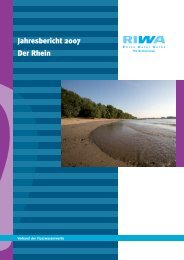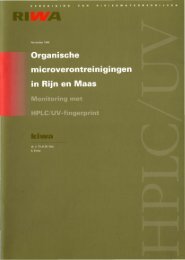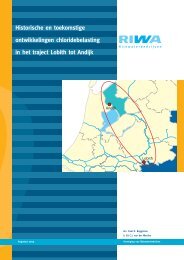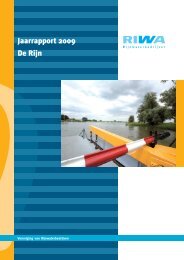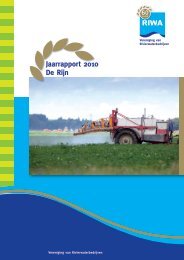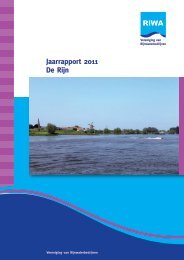Organic micropollutants in Rhine and Meuse a - Riwa
Organic micropollutants in Rhine and Meuse a - Riwa
Organic micropollutants in Rhine and Meuse a - Riwa
You also want an ePaper? Increase the reach of your titles
YUMPU automatically turns print PDFs into web optimized ePapers that Google loves.
Selection of unidentified substances for identification<br />
<strong>Organic</strong> <strong>micropollutants</strong> that, on the basis of the Ames mutagenicity test, are relevant<br />
from a toxicological po<strong>in</strong>t of view, have a polarity that corresponds to the area<br />
covered by the HPLC/UV f<strong>in</strong>gerpr<strong>in</strong>t. It is therefore important that unidentified<br />
substances <strong>in</strong> this area <strong>in</strong> particular are identified. Identification with GCIMS is often<br />
not possible, s<strong>in</strong>ce the compounds concerned are often too polar to be measured with<br />
GCIMS. Identification of unidentified substances by HPLCIMS is a much more<br />
expensive method than identification with GCIMS, because, per compound, much<br />
more time is required for structure elucidation. The HPLC/UV f<strong>in</strong>gerpr<strong>in</strong>t can be used<br />
as a selection criterion: identification with HPLCIMS is appropriate above all for<br />
compounds that occur frequently <strong>and</strong> <strong>in</strong> high frequencies, <strong>and</strong> either are not removed<br />
by treatment, or are <strong>in</strong>troduced by treatment.<br />
26 RIVVA



